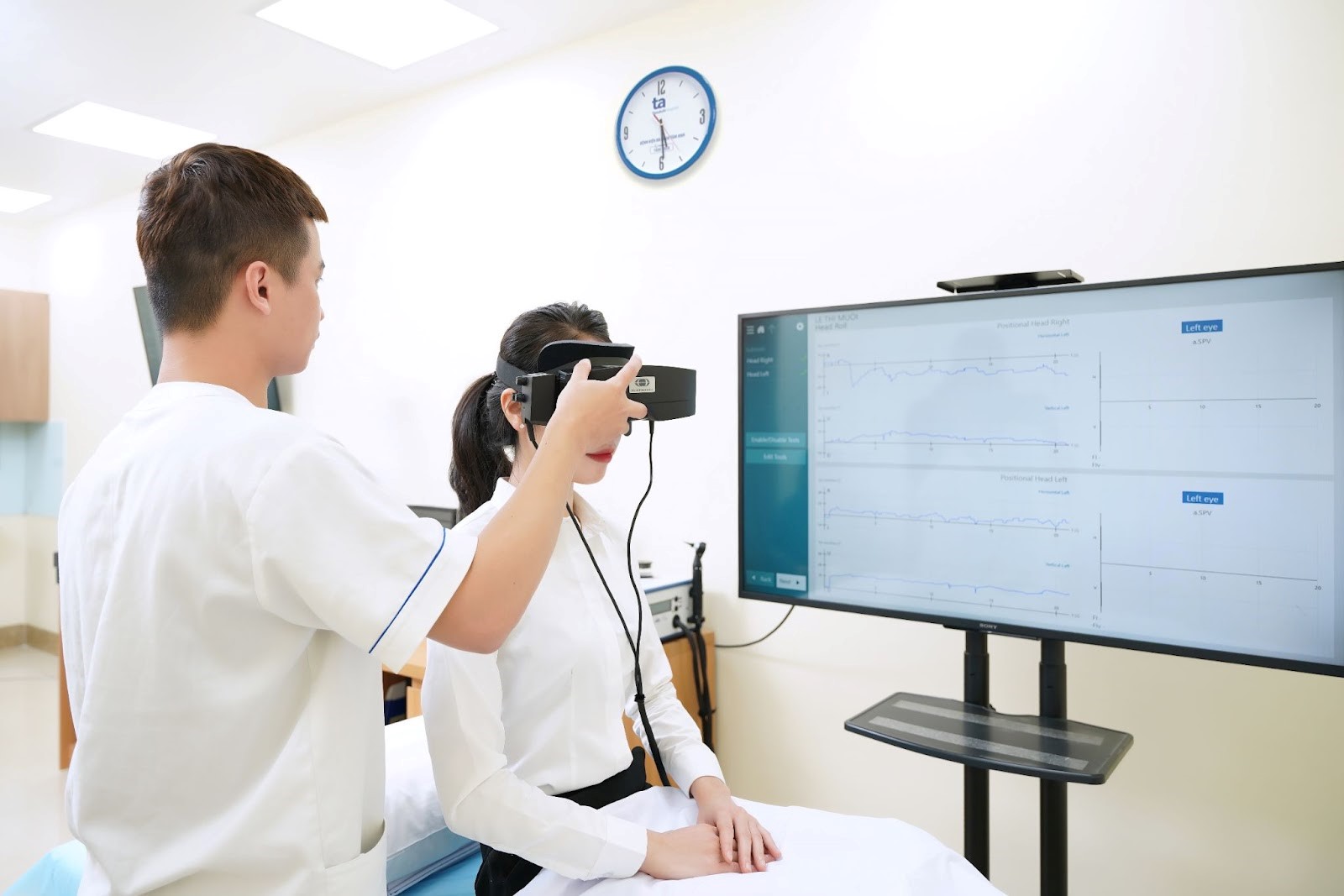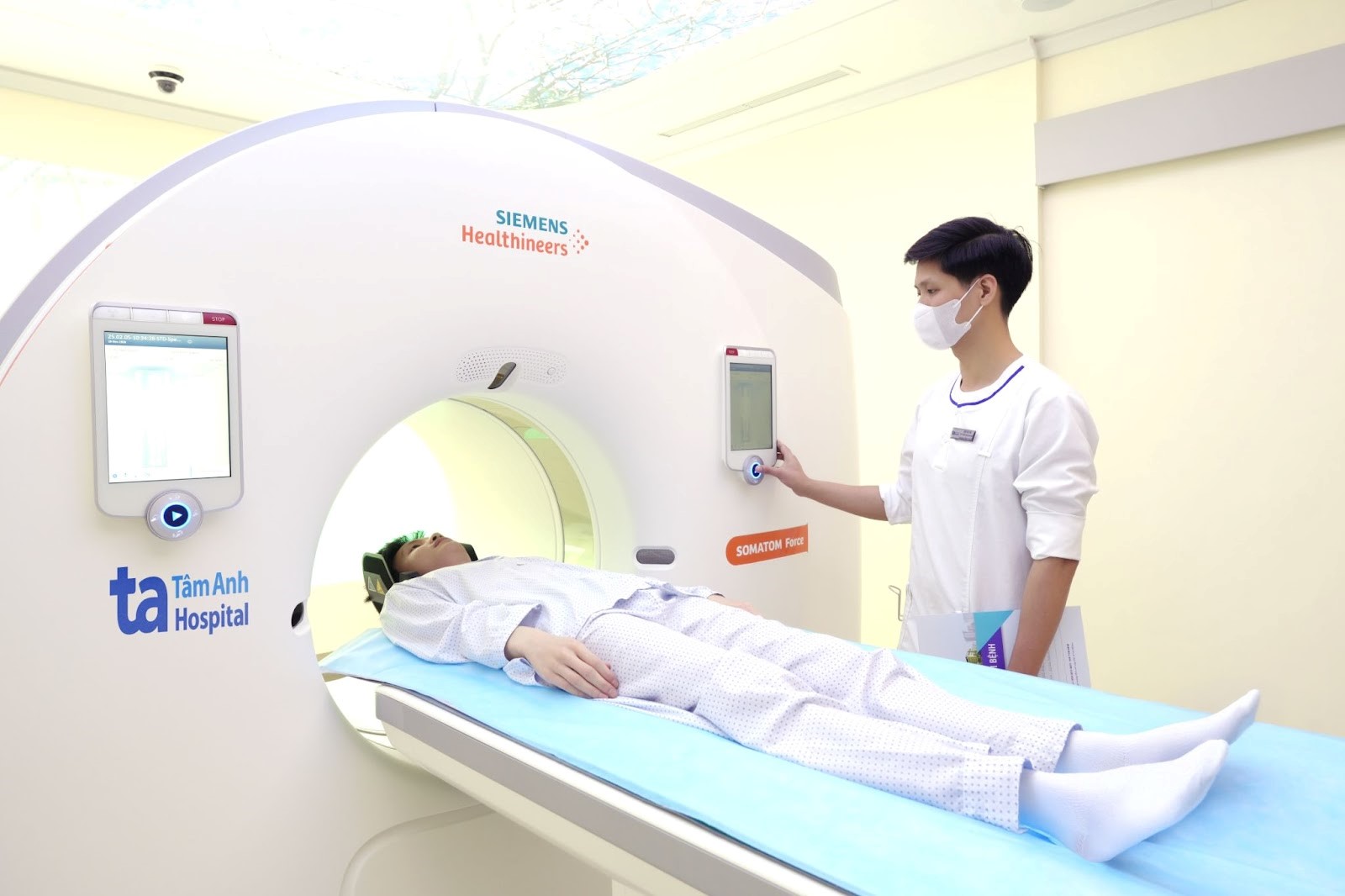The vestibular system helps the body maintain balance and spatial orientation. It comprises the vestibular organs in the inner ear, the vestibular nerve, and signal processing centers in the brain. When any part of this system is damaged, individuals may experience dizziness, loss of balance, nausea, and tinnitus. Vertigo is broadly classified into two main categories: central and peripheral.
Dr. Le Thi Thu Van, Master of Science, from the Department of Neurology and Stroke at Tam Anh General Hospital in Hanoi, explains that central vertigo is caused by damage within the brain, particularly the cerebellum, brainstem, or pathways transmitting signals from the brain to other parts of the body. Common causes include stroke, brain tumors, multiple sclerosis, traumatic brain injuries, and central nervous system infections. Peripheral vertigo, on the other hand, originates in the inner ear or the vestibular nerve. Common causes include benign paroxysmal positional vertigo (BPPV), labyrinthitis, vestibular neuritis, Meniere's disease, inner ear trauma, and intoxication.
The symptoms of central vertigo are often more complex and varied. Patients may experience dizziness accompanied by double vision, difficulty speaking, limb weakness or paralysis, impaired coordination, and ataxia. This type of vertigo doesn't usually change much with changes in position and tends to be persistent. Some individuals may also exhibit other neurological signs such as tremors, seizures, or brief loss of consciousness.
 |
A technician conducts a vestibular assessment. Photo: Tam Anh General Hospital |
A technician conducts a vestibular assessment. Photo: Tam Anh General Hospital
Peripheral vertigo typically causes intense dizziness with a distinct spinning sensation. Symptoms worsen with changes in position, such as turning the head, sitting up, or bending over. Patients may experience nausea, vomiting, tinnitus, or hearing loss. The duration of dizziness is usually shorter, ranging from a few seconds to a few hours, before gradually subsiding. Vision and limb movement are generally unaffected, unlike in central vertigo.
Dr. Van explains that differentiating between central and peripheral vertigo relies on observing nystagmus (involuntary eye movements) and accompanying neurological signs. Hospitals equipped with videonystagmography (VNG) machines can measure and analyze eye movements to pinpoint whether the damage is central or peripheral. This method provides rapid, non-invasive results, allowing doctors to quickly determine a diagnosis. If central damage is suspected, doctors may order magnetic resonance imaging (MRI) or computed tomography (CT) scans of the brain to identify the cause. For peripheral damage, patients may undergo hearing tests, vestibular function tests, or temporal bone CT scans if necessary.
 |
The Somatom Force VB30 CT system aids in diagnosing central vertigo. Photo: Tam Anh General Hospital |
The Somatom Force VB30 CT system aids in diagnosing central vertigo. Photo: Tam Anh General Hospital
Treatment for central vertigo focuses on addressing the underlying brain issue. This may involve interventions such as surgery to remove tumors or medication to treat neurological conditions. Treatment for peripheral vertigo includes anti-inflammatory drugs, medication to reduce dizziness, balance rehabilitation exercises, and lifestyle adjustments. Early detection and timely intervention can help patients minimize complications and improve their quality of life.
Individuals experiencing frequent dizziness accompanied by neurological symptoms like weakness, paralysis, difficulty speaking, or sudden vision loss should seek immediate medical attention, as these could indicate a stroke. Those with recurrent or persistent dizziness that impacts daily life or work should also be evaluated to determine the cause and receive appropriate treatment.
Viet An
| Readers can submit questions about neurological conditions here for doctors to answer. |












